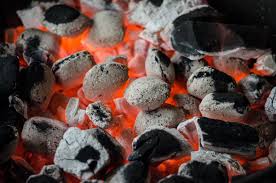In recent years, the demand for eco-friendly fuel alternatives has been rising rapidly. One of the most popular solutions is briquettes, a compact block made from biomass materials such as sawdust, coconut shell, rice husk, or charcoal powder. Many people search for “how to make briquettes” because it is not only a sustainable energy option but also a profitable small-scale business idea.
In this guide, we will cover everything you need to know about making briquette, from preparation to production and storage.
Why Briquette Are a Great Alternative
Before learning how to make briquettes, it’s important to understand their benefits:
-
Eco-Friendly: Briquette use agricultural waste and reduce deforestation.
-
Cost-Effective: Raw materials are cheap or even free.
-
High Energy Efficiency: Well-made briquette burn longer and cleaner compared to regular firewood.
-
Business Opportunity: With increasing global demand, briquette production can be a profitable industry.
Materials Needed to Make Briquettes
To successfully learn how to make briquette, you need the right raw materials. The most common options include:
-
Charcoal dust or sawdust – the base material.
-
Agricultural waste – rice husk, coconut shell, coffee husk, or groundnut shell.
-
Binder – such as cassava starch, molasses, or clay, to hold the particles together.
-
Water – to mix and activate the binder.
Step-by-Step How to Make Briquettes
Here’s the simple process for making briquettes:
1. Collect and Prepare the Raw Material
Dry the biomass material completely. Moisture content should ideally be less than 10%, as wet materials make weak briquettes.
2. Carbonization (if needed)
For materials like coconut shells or wood, carbonize them in a kiln or drum. This step converts raw biomass into charcoal, improving burning quality.
3. Grind into Fine Powder
Use a crusher or grinder to reduce the size of the charcoal or biomass into fine particles. The smaller the size, the stronger the briquette.
4. Mix with Binder
Add a natural binder such as cassava starch. For every 10 kg of charcoal powder, around 1 kg of binder is enough. Mix thoroughly with water until you get a consistent paste.
5. Mold the Briquettes
Press the mixture into briquette shapes using a manual mold or briquetting machine. The pressure ensures that the briquettes are compact and solid.
6. Drying Process
Place the fresh briquettes under the sun or in a drying chamber until completely dry. Proper drying prevents cracking and ensures long-lasting fuel.
Tips for Making High-Quality Briquettes
-
Always keep moisture content low.
-
Apply strong pressure during molding.
-
Store briquettes in a dry, cool place to avoid absorbing moisture.
-
Test burn a sample before large-scale production.
Business Potential of Briquette Production
Learning how to make briquettes is not only about self sufficiency in fuel but also about building a business. Many countries in Africa, Asia, and Europe are now using briquette as a sustainable energy alternative. Export demand is also increasing, especially for charcoal briquette made from coconut shell.
Small-scale entrepreneurs can start with minimal investment using manual molds and gradually upgrade to briquette machines for mass production.
Conclusion
Now that you understand how to make briquettes, you can start experimenting with available materials around you. With the right process, briquettes can become a sustainable solution to fuel needs while opening doors for business opportunities. Whether for personal use or commercial purposes, making briquette is a smart step toward eco-friendly living. For more insights, you can check coconut shell charcoal briquette as one of the best eco-friendly alternatives.

